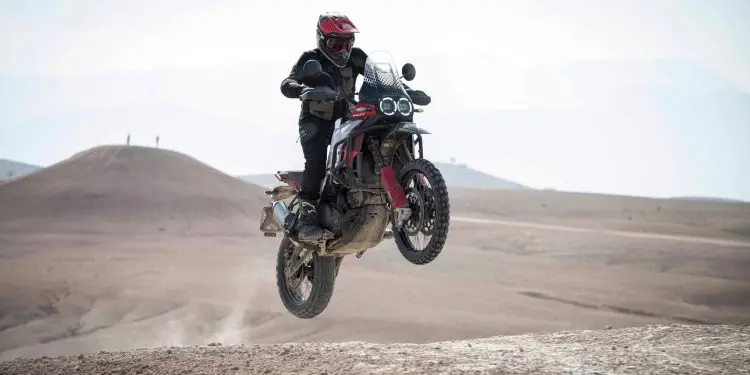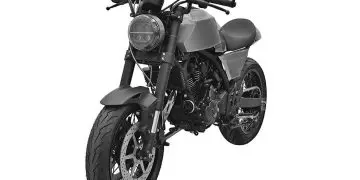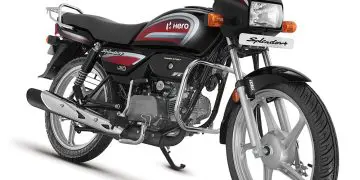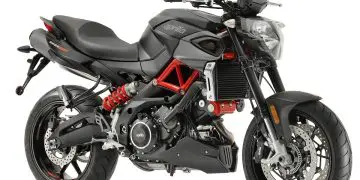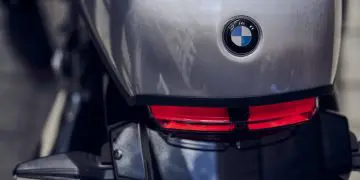The seat height of 910 mm is high, the highest of any current production motorcycle, while 250 mm and 240 mm of suspension travel, front and rear, and 280 mm of ground clearance are also attractive numbers. But if you want a motorcycle to perform off-road, these are the measurements you have to take into account. After all, the Ducati Panigale V4R is an impressive sports bike, but it’s not comfortable. If you want an adventure bike ready to compete, it will have to have a high seat and long travel suspension. You can always install a lower seat, which lowers the height to 885 mm, but it will still be high. There’s no hiding it, the Rally is a big bike!
For reference, I’m almost 1.72 cm tall, and if the seat height wasn’t as scary as I expected, mainly because the seat and the bike are narrow, it means I can safely put one foot on the ground while reaching for the rear brake or gear shifter with the other. Checking the specifications, it’s also a bit heavy bike, similar to the competition (203 kg dry weight), but we don’t feel it, even when fully fueled. However, I found it challenging to retract the side stand while seated – my legs simply aren’t long enough – and I believe even taller riders may have difficulties.
TOP-OF-THE-LINE SUSPENSION
However, I will tolerate a slightly boring side rest because the Rally is one of the best adventure bikes I have ever ridden off-road. 90% of our two-day test in Morocco was off-road, ranging from open and fast terrain to slow and rocky sections, sand and some jumps, and the suspensions proved to be flawless.
Ducati invested in quality suspension units from KYB. These are so sublime that the Rally when off-road rides almost like it’s on a paved road. You can feel the KYB units working hard, but at the same time everything is controlled, with no jerks in the handlebars or bounces in the rear.
I consciously tried to test the adjustments, closing the throttle on bumps to activate the extension: no problems. Hitting rocks on braking with the forks compressed: again, no jerks. Even taking decent jumps (for me): it absorbed everything flawlessly. Throughout the journey, on both days, the KYB suspension made the ride easy, not too tiring or exhausting. And I felt comfortable on the dirt at 110 km/h. Even in deep sand, I simply leaned back and let the front wheel find its way. I don’t remember ever riding an adventure bike off-road with such confidence in the chassis and suspensions.
As expected, the front and rear units are adjustable, with the rear featuring high and low-speed compression damping and remote preload adjustment. I never adjusted the suspension, and few riders at the presentation did, as they work perfectly as soon as the bike comes out of the box. Only heavy or light riders, who have a very high level of competition, or in high-speed terrain, will want to modify the suspension.
FUNCTIONAL ELECTRONICS
The Rally and Enduro driving modes are genuinely useful options, along with driving aids. I look ahead, see a more problematic area and select Enduro mode, which reduces power and increases the level of rider aids intervention.
Then, as the path opens up, I close the throttle, switch to Rally, do some wheelies, and continue to have fun. All done in real time, without the need to stop and reconfigure the riding aids.
The off-road ABS saved me on two occasions, possibly more. Being able to ride off-road, with specific off-road driving aids that in the lower settings were designed to work with off-road tires (unlike the base DesertX) is impressive.
Our test bikes were equipped with Pirelli Scorpion Rally off-road tires, which means it’s difficult to give an exact impression of the Rally and how it will be to ride it on everyday roads. The only road we took was at a relatively slow speed and the Rally felt composed, even for a tall adventure bike that didn’t seem clumsy at all. It also climbed some mountain passes with ease. The DesertX base impresses on the road and I’m sure the Rally will be the same, but we will need a longer and more complete road test to be sure.The seat is very high, but for us to have a high suspension travel and a good ground clearance there are no miracles…
The raised fender is undoubtedly the hallmark of this new DesertX Rally.
Carbon skid plate, or we wouldn’t be talking about a Ducati.
There is no denying that the new DesertX Rally is an expensive bike with a price tag of €21,745. But it is a model equipped with high-quality components that help justify the high asking price. The closed-cartridge KYB forks are the first on a production Ducati, possibly the first on any production bike, and similar to those on Meo’s race bike – buy them separately for your adventure bike and they will cost around €4,500, plus another €1,500 for the rear shock. The Excel rims with steel and carbon spokes are also not cheap, and the Rally also gets a non-electronic Öhlins steering damper and a forged carbon fiber skid plate. So, although the asking price is high, it’s easy to see where the money has been spent!
VERDICT
I would not refer to the new Rally as a better DesertX, as it is a very different bike and honestly I do not know how it will perform on the road, although the indications are excellent. However, what I can say is that the new Rally is possibly the best “big” adventure bike I have ever ridden off-road. The suspension is probably the best I have ever experienced on off-road terrain. The Rally remains unfazed on any terrain and is genuinely ready to race as soon as it comes out of the box, which, away from the asphalt, should put it above the competition. This is not, however, an extreme adventure bike, intended for a public where only riders are present; the aids and riding modes, together with the friendly power delivery, make it flexible and usable for a wide range of riders. It can even be adapted for A2 license holders! On one hand, with the road legal components removed, it is ready to race, but equally an inexperienced rider can spend days standing in the spacious areas of Morocco, just enjoying the challenge and navigation. There are disadvantages: 910 mm seat height is quite high, it is an expensive bike and the side stand is a bit awkward, especially for short riders like me. But on the other hand, the DesertX Rally is hard to criticize as an off-road adventure bike.DUCATI DesertX Rally
Twin-cylinder L engine at 90º, desmodromic distribution, 4 valves per cylinder, liquid cooling
DISPLACEMENT 937 cc
POWER 81 Kw (110 hp) @9,250 rpm
TORQUE 92 Nm @6,500 rpm
GEARBOX 6 speeds
FRAME steel tube trellis
FUEL TANK 21 liters
FRONT SUSPENSION KYB inverted telescopic fork of 48 mm, 250 mm travel
REAR SUSPENSION KYB monoshock, adjustable, 240 mm travel
FRONT BRAKE 2 discs of 320 mm, Brembo Monobloc radial calipers with 4 pistons
REAR BRAKE 265 mm disc, Brembo caliper with 2 pistons
FRONT TIRE 90/90 – 21
REAR TIRE 150/70 R18
WHEELBASE 1,625 mm
SEAT HEIGHT 910 mm
WEIGHT 203 kg (dry)
MSRP (from) 21,745 €


